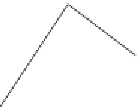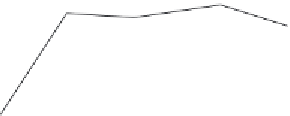Agriculture Reference
In-Depth Information
pulp) when compared to a low fibre diet. However, the colostrum intake of piglets with
a low birth weight (<900 g) was nearly 60% higher when sows were fed the high fibre
diet. Collectively, these data indicate that nutrition in late gestation is important for the
colostrum yield of sows, but it is at present unknown which part of gestation (last week,
last three weeks or last trimester) is most critical for colostrum production.
8.4
Milk production
Sow milk yield is a limiting factor for the growth rate of piglets (Harrell
et al.
, 1993).
Indeed, providing supplemental milk to suckling pigs significantly increased their
weaning weight (Miller
et al.
, 2012). Piglet weaning weight, in turn, has a major impact
on post-weaning performance and there is a linear relationship between weaning weight
and average daily gain in the post-nursery period (Cabrera
et al.
, 2010). Milk production
by the sow is even more limiting in the current context where hyperprolific sow lines are
being used. It is therefore important to know the various factors that can affect sow milk
yield in order to develop management strategies that could potentially stimulate it.
8.4.1
Pattern of milk production
Sow milk production can be described in four phases, namely, the colostral, ascending,
plateau, and descending phases. Typical sow milk production curves are shown in
Figure 8.1. In the early colostrum phase, mammary secretions are continuously available
to the piglets and, as mentioned earlier in this chapter, daily production is very variable
between sows. In contrast, milk is not available continuously but only during milk
ejection periods, which last approximately 10 to 15 seconds (Fraser, 1980). During the
12
10 pigs
8 pigs
7 pigs
6 pigs
10
8
6
4
0
5
10
15
20
25
30
35
40
Day of lactation
Figure 8.1. Pattern of milk production of first-litter sows with different litter sizes (Toner
et al
., 1996).






















































